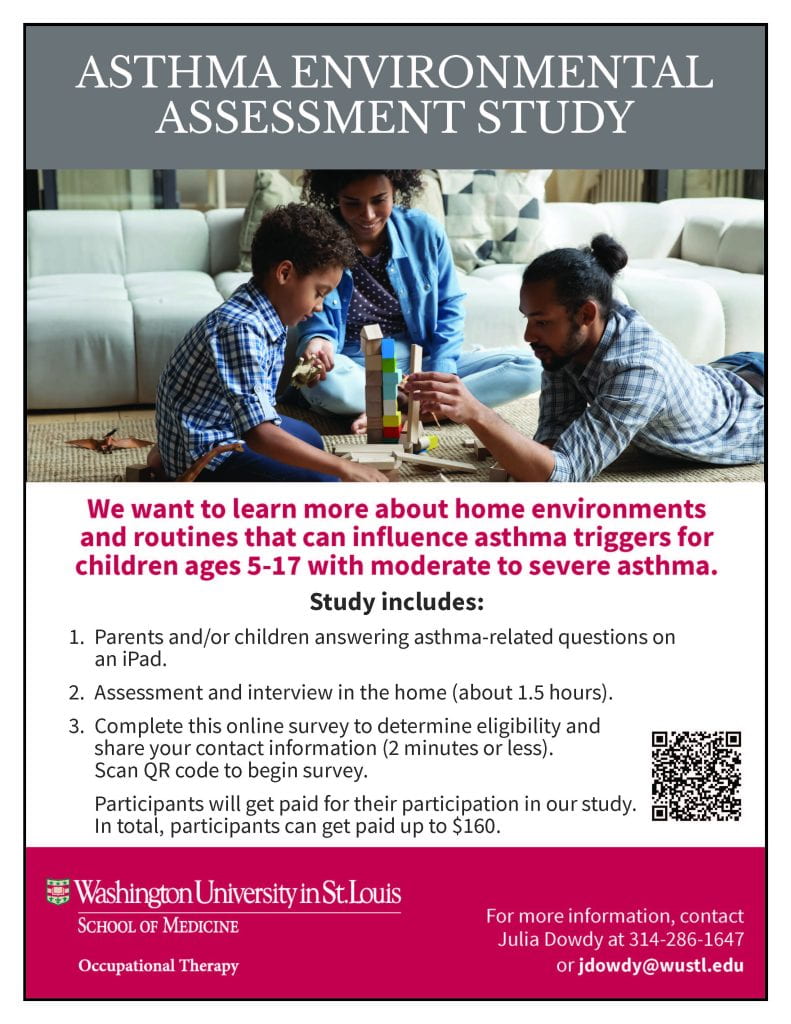There is an abundance of evidence that asthma symptoms inhibit quality of life in everyday activities and that reducing environmental triggers reduces asthma symptoms. Literature shows that implementing modifications to the physical environment of a home to reduce asthma triggers are cost-effective. Furthermore, these initiatives are supported by policy, and when inhibiting health and wellbeing, are enforceable. This study assesses and modifies the physical environment of homes in order to best support health outcomes of those with childhood asthma. The aims of this study are to:
- Identify high risk youth with asthma appropriate for an environmental home assessment
- Determine the acceptability and usability of an occupation-based asthma home environmental assessment
- Examine the impact of asthma symptoms on occupational participation for children and adolescents with asthma
